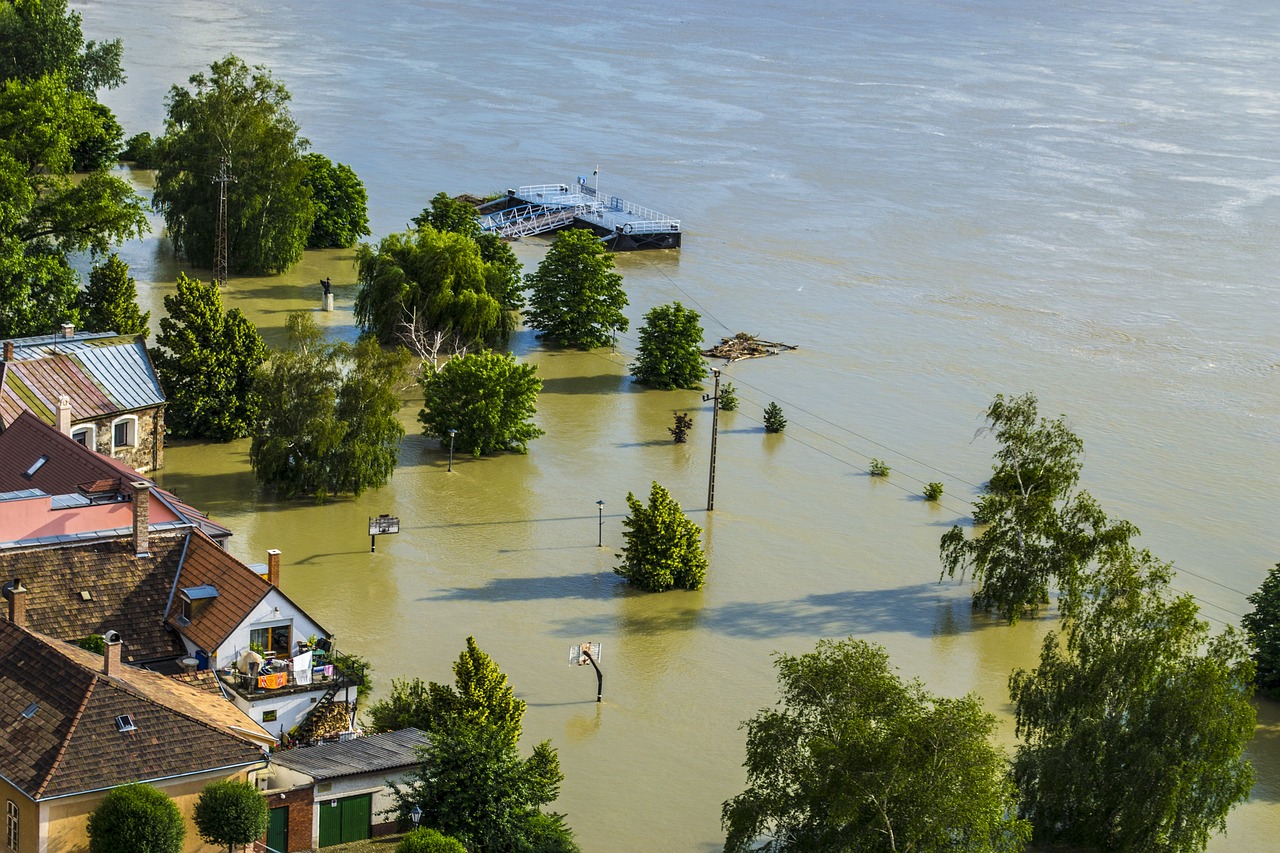“Bring Your Home Back to Life with 5 Renovation Tricks!”
Introduction
If your home has been flooded, it can be a daunting task to restore it to its former glory. However, with the right renovation tricks, you can make your home look and feel like new again. In this article, we will discuss five renovation tricks for restoring your flooded home. From using the right materials to taking the time to properly clean and sanitize, these tips will help you get your home back to its pre-flood condition. So, if you’re ready to start the process of restoring your flooded home, read on to learn more.
How to Identify and Repair Structural Damage After a Flood
Floods can cause extensive damage to homes and other structures, and it is important to identify and repair any structural damage as soon as possible. Structural damage can weaken the structure of a building and make it unsafe, so it is important to take the necessary steps to ensure that the structure is safe and secure. This article will provide an overview of how to identify and repair structural damage after a flood.
The first step in identifying and repairing structural damage after a flood is to assess the damage. This should be done by a qualified professional, such as a structural engineer or a building inspector. They will be able to identify any areas of the structure that have been weakened or damaged by the floodwaters. It is important to note that even if the damage is not immediately visible, it may still be present and should be addressed.
Once the damage has been identified, the next step is to repair it. This may involve replacing damaged materials, such as drywall, insulation, and flooring, or it may involve reinforcing weakened areas of the structure. It is important to use materials that are designed to withstand flooding, such as waterproof drywall and insulation. Additionally, any repairs should be done in accordance with local building codes and regulations.
Finally, it is important to take steps to prevent future flooding. This may involve installing flood barriers, such as flood gates or levees, or it may involve making changes to the landscape to divert floodwaters away from the structure. Additionally, it is important to ensure that the structure is properly maintained and inspected on a regular basis to ensure that any potential damage is identified and addressed quickly.
By following these steps, homeowners and other property owners can ensure that their structures are safe and secure after a flood. Identifying and repairing structural damage quickly is essential to preventing further damage and ensuring the safety of the structure.
Tips for Cleaning and Sanitizing Your Home After a Flood
1. Wear protective gear: When cleaning and sanitizing your home after a flood, it is important to wear protective gear such as rubber gloves, boots, and a face mask. This will help protect you from any bacteria or contaminants that may be present in the floodwater.
2. Remove all standing water: The first step in cleaning and sanitizing your home after a flood is to remove all standing water. This can be done by using a wet/dry vacuum or a sump pump. Make sure to dispose of the water properly.
3. Disinfect all surfaces: After all standing water has been removed, it is important to disinfect all surfaces. This includes walls, floors, furniture, and any other items that may have been exposed to the floodwater. Use a disinfectant that is specifically designed for use after a flood.
4. Discard any porous items: Porous items such as carpets, mattresses, and furniture should be discarded if they have been exposed to floodwater. These items can harbor bacteria and contaminants that can be difficult to remove.
5. Clean and sanitize all non-porous items: Non-porous items such as dishes, utensils, and toys should be cleaned and sanitized. Use a mild detergent and hot water to clean these items, then sanitize them with a solution of one tablespoon of bleach per gallon of water.
6. Dry out the area: After all surfaces have been cleaned and sanitized, it is important to dry out the area. Use fans and dehumidifiers to help speed up the drying process.
7. Dispose of any hazardous materials: If there are any hazardous materials such as chemicals or fuel that have been exposed to the floodwater, they should be disposed of properly. Contact your local hazardous waste disposal facility for more information.
Following these tips will help ensure that your home is properly cleaned and sanitized after a flood. It is important to take the necessary steps to protect your family from any potential health risks.
Strategies for Replacing Damaged Flooring and Carpeting
When it comes to replacing damaged flooring and carpeting, there are several strategies that can be employed to ensure the best possible outcome. The first step is to assess the extent of the damage and determine the best course of action. Depending on the severity of the damage, it may be necessary to replace the entire floor or carpet, or just a portion of it.
For minor damage, such as small tears or stains, it may be possible to repair the existing floor or carpet. This can be done by patching the damaged area with a patch kit or by using a carpet repair kit. If the damage is more extensive, it may be necessary to replace the entire floor or carpet. In this case, it is important to choose a flooring or carpeting material that is of the same quality and style as the existing floor or carpet.
When replacing an entire floor or carpet, it is important to consider the cost of the new material. It is also important to consider the installation costs, as this can add significantly to the overall cost of the project. It is also important to consider the amount of time and effort that will be required to install the new floor or carpet.
When replacing a portion of the floor or carpet, it is important to consider the size of the area that needs to be replaced. If the area is large, it may be necessary to hire a professional to install the new floor or carpet. If the area is small, it may be possible to do the installation yourself.
Finally, it is important to consider the type of flooring or carpeting that is being replaced. Different types of flooring and carpeting require different installation techniques and materials. It is important to research the different types of flooring and carpeting available and choose the one that best suits the needs of the project.
By following these strategies, it is possible to replace damaged flooring and carpeting in a cost-effective and efficient manner. With careful planning and research, it is possible to ensure that the new floor or carpet will look great and last for many years to come.
Creative Ideas for Replacing Damaged Furniture and Appliances
When furniture and appliances become damaged, it can be difficult to decide how to replace them. While some people may opt to purchase new items, there are a variety of creative solutions that can help to save money and reduce waste.
One option is to repair the damaged item. This can be a cost-effective solution, as it eliminates the need to purchase a new item. Depending on the extent of the damage, it may be possible to repair the item yourself or hire a professional. If the item is beyond repair, it may be possible to find replacement parts to restore it to its original condition.
Another option is to repurpose the item. This can be a great way to give an old item a new life. For example, an old dresser can be repurposed into a bookshelf or a kitchen island. Similarly, an old appliance can be repurposed into a planter or a storage unit.
Finally, it is possible to purchase used furniture and appliances. This can be a great way to save money and reduce waste. Many thrift stores and online marketplaces offer a wide selection of used items at discounted prices. Additionally, many of these items are in good condition and can be used for years to come.
In conclusion, there are a variety of creative solutions for replacing damaged furniture and appliances. Repairing, repurposing, and purchasing used items are all viable options that can help to save money and reduce waste.
Cost-Effective Solutions for Restoring Your Home After a Flood
Floods can cause extensive damage to homes, leaving homeowners with the daunting task of restoring their property. Fortunately, there are cost-effective solutions available to help homeowners restore their homes after a flood.
One of the most important steps in restoring a home after a flood is to remove any standing water and dry out the affected area. This can be done by using a wet/dry vacuum, fans, and dehumidifiers. These tools can help to quickly remove standing water and dry out the area, preventing further damage from occurring.
Once the area is dry, homeowners should inspect the walls and floors for any signs of water damage. If any damage is found, it should be addressed immediately. This may include replacing drywall, flooring, and insulation. Homeowners can save money by doing this work themselves, as long as they have the necessary tools and skills.
In addition to replacing damaged materials, homeowners should also take steps to prevent future flooding. This may include installing a sump pump, waterproofing the basement, and installing a backwater valve. These measures can help to protect the home from future flooding and can save homeowners money in the long run.
Finally, homeowners should take steps to protect their belongings from future flooding. This may include storing items in waterproof containers, moving furniture to higher ground, and installing flood sensors. These measures can help to protect valuable items from future flooding and can save homeowners money in the long run.
By taking these steps, homeowners can restore their homes after a flood in a cost-effective manner. By removing standing water, replacing damaged materials, taking preventative measures, and protecting belongings, homeowners can restore their homes without breaking the bank.
Conclusion
In conclusion, restoring a flooded home can be a daunting task, but with the right knowledge and tools, it can be done. By following the five renovation tricks outlined in this article, you can restore your home to its pre-flood condition and make it a safe and comfortable place to live. With the right preparation and planning, you can make sure that your home is restored to its original condition and that you and your family can enjoy it for years to come.






